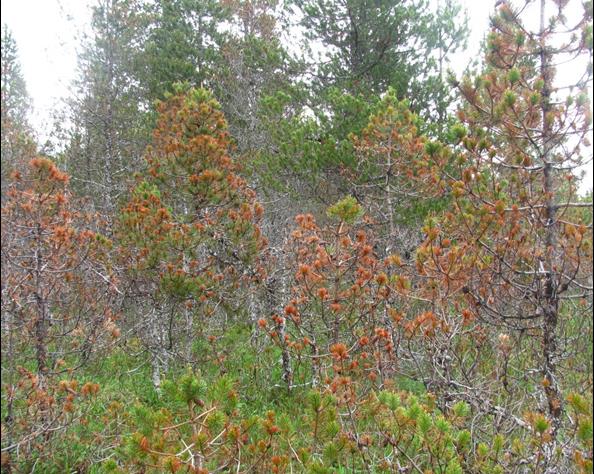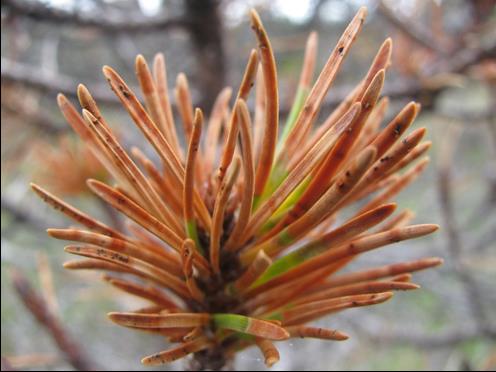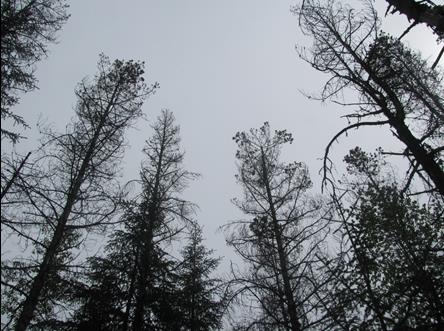Why are shore pines turning brown and dying in Gustavus and nearby Glacier Bay?
Project Dates
July 2012 - June 2014
Did You Know?
Ten thousand years ago, between glacial epochs, shore pine was the dominant tree in Southeast Alaska. In the modern era, shore pine in Southeast Alaska is mostly restricted to muskegs; its prevalence in Gustavus is an ecological anomaly, and one that may not last for long.
Introduction

Shore pine, a subspecies of lodgepole pine (Pinus contorta), colonized a welcoming environment 200-250 years ago in a very young Gustavus. It is a bit of a mystery why shore pine became so prevalent in Gustavus, where it occurs in mixed forests of spruce and cottonwood. It is not found in Juneau’s Mendenhall Glacier forelands, for instance, and is very scarce in young successional environments farther up Glacier Bay. Seed source may be a factor.
Whatever it is about Gustavus that once favored the growth of shore pine, the pines are losing out as Gustavus matures ecologically. Multiple adverse forces are taking their toll. Take a walk through a Gustavus forest and you will see almost no young pines. In pine-dominated forests as well as in wet meadows, a fungal infection of the pines’ foliage (needles) is on the march. Pines are also vulnerable to western gall rust and bark beetles.
The foliar fungus Dothistroma pini has been observed in several locations in the Gustavus/Glacier Bay area. The damage was mapped in late July 2012 during the U.S. Forest Service Forest Health Protection annual aerial detection survey. Several mapped polygons are within the park boundary (along Rink Creek Road, the park entrance road, and Excursion Ridge). Other areas of damage are on state or Nature Conservancy lands in Gustavus.
Methods

Some of the damage polygons mapped during the 2012 aerial detection survey were visited for ground-truthing in 2013. Trees were evaluated, and some foliage collections were made to determine the cause of foliage discoloration.
Foliage diseases require fungal fruiting bodies (spore-producing structures) on needles for identification. Surveys therefore take place early in the growing season, when fungal fruiting bodies mature on needles. Site factors that may contribute to tree stress, such as excessively saturated soils, impermeable soil layers, and wounds caused by animals or falling trees were examined, as were bark beetles and stem defects (western gall rust, stem cankers, etc.) caused by other fungi.
The researchers will return to Gustavus and the park in 2014 to look at survival in locations with severe infection.
Findings

There have been three consecutive years of a severe foliage disease epidemic of shore pine caused by the fungus Dothistroma pini in the study area. The researchers expect to see mortality of heavily infected trees, because shore pines often retain less than three years of foliage, and some have therefore been completely defoliated.
Last updated: September 15, 2016
